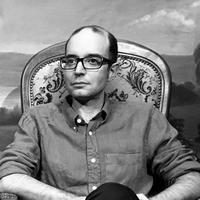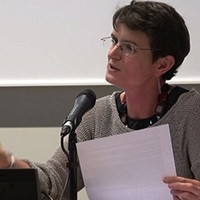
Gian Luca Gregori
Full Professor of Roman Antiquities and Institutions at the Sapienza University of Rome. Since 1996 Secretary of the Commission for Supplements to Greek and Latin epigraphic corpora at the Unione Accademica Nazionale (Rome). Since 1999 co-editor of the Supplementa Italica. From 1988 to today he has participated to many national and international conferences. He is Corresponding Member of the Institutum Archaeologicum Germanicum (DAI) and of the Academia Europaea.
Main lines of research:
1. Spectacles in the Roman Empire with particular attention to the gladiators
2. Edition of Rome Latin inscriptions
3. Edition of Latin inscriptions from Italy
4. Prosopography and social history of Roman Italy
5. Northern Italy in the Roman age
6. Epigraphic forgeries
His bibliography includes around 250 titles.
https://orcid.org/0000-0002-6833-3392
Supervisors: Supervisor
Phone: +390649913039
Address: Rome (00185), Lazio, Italy
Piazzale Aldo Moro, 5
Main lines of research:
1. Spectacles in the Roman Empire with particular attention to the gladiators
2. Edition of Rome Latin inscriptions
3. Edition of Latin inscriptions from Italy
4. Prosopography and social history of Roman Italy
5. Northern Italy in the Roman age
6. Epigraphic forgeries
His bibliography includes around 250 titles.
https://orcid.org/0000-0002-6833-3392
Supervisors: Supervisor
Phone: +390649913039
Address: Rome (00185), Lazio, Italy
Piazzale Aldo Moro, 5
less
Related Authors
Sinclair W Bell
Northern Illinois University
Peter Kruschwitz
University of Vienna
Maria Nilsson
Lund University
Giulia Sissa
Ucla
Enrico Cirelli
Università di Bologna
Francesco Camia
Università degli Studi "La Sapienza" di Roma
Alejandro García-Reidy
University of Salamanca
Seth Bernard
University of Toronto
Francesca Gazzano
University of Genova
Françoise Van Haeperen
UCLouvain (University of Louvain)
InterestsView All (34)










Uploads
Papers by Gian Luca Gregori
vittoria’. Le attestazioni di nomi con questa base celtica usati come
antroponimi o toponimi sono frequentissime, ma sia pure molto di rado essi si trovano anche come teonimi.
freedwomen, mainly mention the ius liberorum with regard to a transfer of property, the men beneficiary of this ius, members of the senatorial order but also freedmen, often mention it only with honorary purpose.
mines present in Val Trompia and Val Camonica. The presence, in the area
of the quarries, of sacred and funerary dedications relating to the members
of the senatorial order of Brixia, could suggest that, at least during the 2nd
century AD, they received income from the extraction and the commerce
of the extracted material, especially that of stone. Indeed, limestone from
the mining district around Brixia was widely used in the city and exported
elsewhere. His use is found in urban architecture and in epigraphy.
2. A bilingual inscription in the Museum of Bergama.
3. A funerary inscription in the Archaeological Museum of Izmir.
4. An inscription fragment in the Museum of Uşak (Lydia)
also adopted for private properties.
of Africa L. Helvius Aelius Dionysius, whose name, like that of the tetrarch Maximian, was later erased. In a third moment the dedication was updated, adding the name of the emperor Constans, son of Constantine,
which in turn has been erased, probably during the usurpation of Magnentius.
vittoria’. Le attestazioni di nomi con questa base celtica usati come
antroponimi o toponimi sono frequentissime, ma sia pure molto di rado essi si trovano anche come teonimi.
freedwomen, mainly mention the ius liberorum with regard to a transfer of property, the men beneficiary of this ius, members of the senatorial order but also freedmen, often mention it only with honorary purpose.
mines present in Val Trompia and Val Camonica. The presence, in the area
of the quarries, of sacred and funerary dedications relating to the members
of the senatorial order of Brixia, could suggest that, at least during the 2nd
century AD, they received income from the extraction and the commerce
of the extracted material, especially that of stone. Indeed, limestone from
the mining district around Brixia was widely used in the city and exported
elsewhere. His use is found in urban architecture and in epigraphy.
2. A bilingual inscription in the Museum of Bergama.
3. A funerary inscription in the Archaeological Museum of Izmir.
4. An inscription fragment in the Museum of Uşak (Lydia)
also adopted for private properties.
of Africa L. Helvius Aelius Dionysius, whose name, like that of the tetrarch Maximian, was later erased. In a third moment the dedication was updated, adding the name of the emperor Constans, son of Constantine,
which in turn has been erased, probably during the usurpation of Magnentius.
Gli autori sono Mattia Balbo, Stèphane Bourdin, Will Broadhead, Gian Pietro Brogiolo, Pier Luigi Dall’Aglio, Ilaria Di Cocco, Carlotta Franceschelli, Gian Luca Gregori, Geoffrey Kron, Luuk de Ligt, Elio Lo Cascio, Marco Maiuro, Marco Marchesini, Silvia Marvelli, Elvira Migliario, Claudio Negrelli, Fabio Saggioro, Sara Santoro†, Francis Tassaux.
Programma del convegno internazionale "I Romani nelle Alpi: Storia, archeologia, epigrafia", che si terrà all'Università di Losanna dal 13 al 15 maggio 2019. Questo convegno è aperto ad ogni persona interessata.
Reunion Internacional, Madrid, Universidad Autonoma, 23-25 noviembre 2022
L’evento è in programma alle ore 15 presso la sede bresciana della Soprintendenza. Interverranno il Soprintendente Luca Rinaldi, il Vice Sindaco e Assessore alla Cultura del Comune di Brescia Laura Castelletti e l'Amministratore delegato di A2A Ciclo Idrico Tullio Montagnoli.
Presenteranno i reperti Serena Solano, funzionario archeologo di zona, e Gian Luca Gregori
da remoto:
Google Meet: https://meet.google.com/nvq-bnij-eqm
Thematically papers were divided into 11 sessions, dealing with different aspects of Greek, Roman and Byzantine fibulae (cf. the program in the abstract booklet). Revised papers will be published in a peer-reviewed proceedings volume.
A fibula is a brooch or pin for fastening garments, typically at the right shoulder. The fibulae developed in a variety of shapes and are usually divided into families that are based upon historical periods, geography, and/or cultures. They are also divided into classes that are based upon their general forms. Fibulae were found in relatively large quantities in the Mediterranean and Black Sea area, where they were in use and produced frequently between the Bronze Age and Medieval periods. So far the study of these multifunctional objects has been overlooked in the Mediterranean whereas there is still a huge amount of unpublished material from excavations and museums in an area from Portugal down to Egypt.
Fibulae can be categorized based on different criteria, including genres of material, production, use and distribution. The purpose of this video conference was to create an analytical framework for understanding the fibulae in their social and material contexts. This conference considered in depth the role played by fibulas – whose uses ranged from clothes pins to status symbols to military badges of rank – in ancient Greek, Roman and Byzantine societies. In recent decades, major excavation projects have produced vast quantities of material data that have reshaped our understanding of the fibulae, while also raising new questions about their use and production over the long term. We focused on a study of brooches in general and fibulas in particular. Along the way we looked at the intersection between material culture and ethnicity, dealing with the contentious issue of how much that a people’s material culture can tell us about their ethnicity – or not! In this online conference we only focused on Greek, Roman and Byzantine fibulae from the Mediterranean and Black Sea area between c. early sixth century B.C. and early seventh century A.D., and attempted to set out a comprehensive model for the study of fibulae, including their definition, typology, chronology, contexts, function, regional characteristics and distribution patterns in the whole Mediterranean and Black Sea geographies.
This conference on ancient material culture and instrumenta is dedicated to the 75th birthday of Dr Maurizio Buora, the former director of the Civici Musei Castello di Udine in Italy and an international authority on fibulae.
Such papers that engage the following themes and topics are invited:
- Fibulae from archaeological field projects (especially well-dated finds), museums and private collections,
- Identification of different kinds of fibulas,
- Ancient Greek and Latin textual sources on fibulae,
- Evolution of fibulae in the Mediterranean and Black Sea area during the Etruscan, Lydian, Archaic, Classical, Hellenistic, Roman and Byzantine periods,
- The construction of fibula taxonomies,
- Similar instrumenta in the ancient Near East and their relations to ancient Graeco-Roman fibulae, - The nature of different types of surviving material culture,
- What ancient Greeks and Romans thought about afterlife? Fibulae in funerary and votive contexts,
- Comparative studies and issues related to the adoption of Greek and/or Roman fibula models in indigenous contexts: fibulae as major indicators of the relationship between these two communities (indigenous and Greek or Roman),
- Fibula as an indicator of rank and prestige in the ancient world,
- Domestic and commercial use of fibulae,
- Early Christian fibulae,
- Byzantine fibulae,
- Post-Byzantine or modern replicas of Classical fibulae,
- Eastern fibulae in the ancient western world,
- Major production centres of fibulae in the eastern Mediterranean and Black Sea area,
- Related instrumenta to fibulae in the regards of their function,
- Documentation and analysis of fibulae,
- The creation of a fully annotated and organized corpus,
- Publication of fibulae in the Mediterranean in possible corpara,
- Miscellanea.
We kindly request that you alert any interested researches, colleagues and students within your research community who would be interested in participating at these Anatolian webinars, either by forwarding our e-mail through Academia, Researchgate, Facebook, Twitter, Instagram or other similar social media, or by printing our program below and displaying it in your institution. Please share it also on your ListServs. We hope that you will be able to join us on Zoom, and look forward to seeing you!
Records of each webinars were placed at:
https://www.youtube.com/c/deuedebiyatfakultesi
Program of the Anatolian webinars
Webinar # 1
Thur 13th Oct 2022, at 3.30pm (Istanbul time)
Dr Hadrien Bru (Université de Franche-Comté, Besançon, France): “Funerary steles from Antioch. A Turco-French archaeological project”.
Webinar # 2
Thur 24th Nov 2022, at 3.30pm (Istanbul time)
Dr Stefano Magnani (Università degli Studi di Udine, Italy): “New milestones from Commagene”.
Zoom link:
https://us02web.zoom.us/j/83713478357?pwd=TnBJeUhyNi9Dc25yK0RlRFNYbXJ3dz09
Meeting ID: 837 1347 8357.
Password: 538001.
Webinar # 3
Thur 8th Dec 2022, at 3.30pm (Istanbul time)
Dr Eva Christof (Karl-Franzens-Universität Graz, Austria): “Roman and Early Byzantine sarcophagi from Cilicia. A Turco-Austrian archaeological project”.
In German.
Zoom link:
https://us02web.zoom.us/j/87913968275?pwd=QkNWdDlubjc0ZS9vT2lUc2dvSTJCUT09
Meeting ID: 879 1396 8275.
Password: 639293.
Webinar # 4
Thur 12th Jan 2023, at 3.30pm (Istanbul time)
Dr Maurizio Buora (Società Friulana di Archeologia, Udine, Italy): “People, goods and ideas from Anatolia to north-eastern Italy”.
In Italian.
Zoom link:
https://us02web.zoom.us/j/82016033176?pwd=VDBrbHIveVhPdjFRMEcrTVV1TEJXUT09
Meeting ID: 820 1603 3176.
Password: 685990.
Webinar # 5
Thur 16th Mar 2023, at 3.30pm (Istanbul time)
Professor Gian Luca Gregori (Università degli Studi di Roma “La Sapienza”, Italy): “Latin inscriptions in Asia Minor I. A Turco-Italian epigraphic project”.
In Italian.
https://us02web.zoom.us/j/85986844384?pwd=Q0pkbUFmREg3RTJnMGliMVpYeVFmZz09
Meeting ID: 859 8684 4384.
Password: 503502.
Webinar # 6
Thur 13th Apr 2023, at 3.30pm (Istanbul time)
Professor Peter Liddel (Department of Classics, Ancient History, Archaeology and Egyptology, University of Manchester, UK) : “Roman and Byzantine inscriptions from eastern Turkey”.
Zoom link:
https://us02web.zoom.us/j/83107325336?pwd=Yk9GQjROQkE2WlYxNjFrTnFic0Rwdz09
Meeting ID: 831 0732 5336.
Password: 121300.
Webinar # 7
Thur 4th May 2023, at 3.30pm (Istanbul time)
Professor Sven Günther (Institute for the History of Ancient Civilizations, Northeast Normal University, Changchun, China): “Current gemological research: from the possible research topics to the organization of an extensive e-conference at DEU and process of its final publication”.
In English.
Zoom link:
https://us02web.zoom.us/j/82295644852?pwd=Y290OFpSRis4RkVvcEdSK09NUTliQT09
Meeting ID: 822 9564 4852.
Password: 901019.
Con Romeo Dell’Era, dottorando in Storia antica presso l’Università di Losanna e la Sapienza Università di Roma, ne parleranno Gian Luca Gregori, professore di Epigrafia Latina e Antichità Romane presso Sapienza Università di Roma, e Stefano Vassere, direttore delle Biblioteche cantonali.